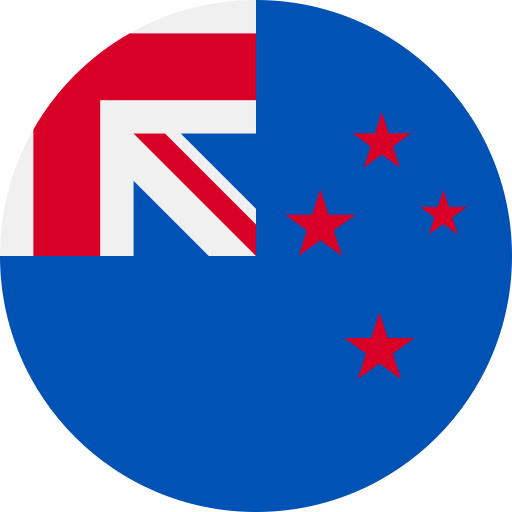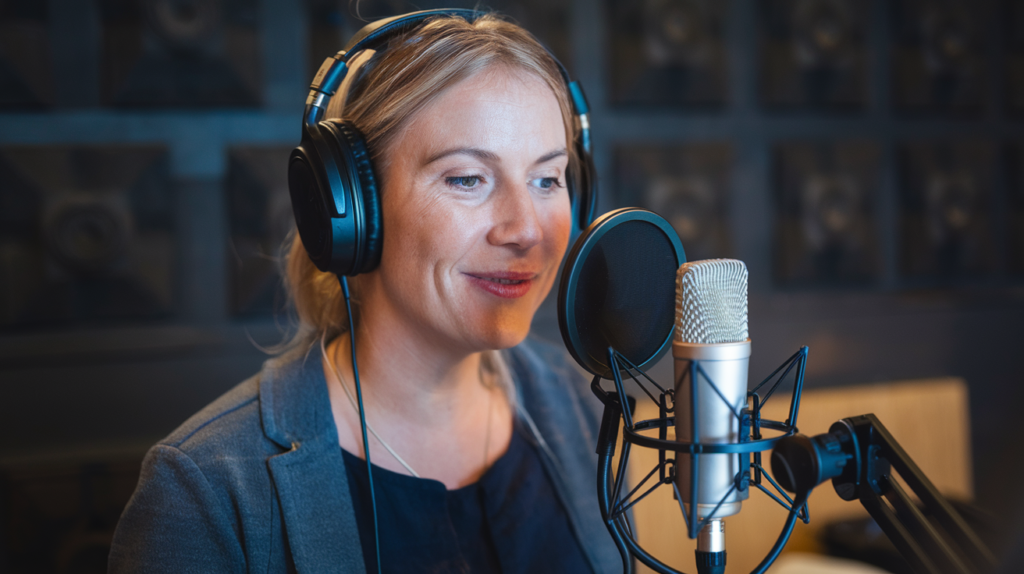Key Takeaways
- Diverse Linguistic Landscape: New Zealand’s language spectrum includes English, Māori, New Zealand Sign Language, and various immigrant languages like Mandarin and Samoan, reflecting its rich cultural diversity.
- Dominance of English: Approximately 96% of the population speaks English, making it the primary language for government, education, and media.
- Cultural Importance of Māori: As one of the official languages, around 3.7% of Kiwis speak Māori. Efforts are ongoing to revive and integrate this language into daily life through education and media.
- Recognition of Sign Language: New Zealand Sign Language is an official language serving about 20,000 members of the Deaf community since 2006, highlighting inclusivity efforts in society.
- Rich Immigrant Contributions: Languages such as Mandarin Chinese (2%) along with Hindi, Spanish, French, and Pacific Island languages enhance New Zealand’s multicultural identity.
- Opportunities for Voice Talent: The linguistic diversity creates unique opportunities for voiceover professionals skilled in different languages or dialects to connect authentically with diverse audiences.
Ever wondered what languages are spoken in New Zealand? You might be surprised to learn that this beautiful country is a melting pot of cultures and tongues. While English dominates, the rich tapestry of languages reflects its diverse heritage and vibrant communities.
Overview of Languages Spoken in New Zealand
New Zealand boasts a rich tapestry of languages, reflecting its diverse cultural landscape. English stands as the dominant language, spoken by roughly 96% of the population. This prevalence makes it the primary medium for education, government, and media.
However, Māori holds significant cultural importance as one of the official languages. Around 3.7% of New Zealanders speak Māori, showcasing its revival and integration into everyday life. The language is not only used in traditional contexts but also features prominently in educational settings and public signage.
New Zealand Sign Language represents another vital component of linguistic diversity. Recognized as an official language since 2006, it serves approximately 20,000 members of the Deaf community. Its inclusion highlights efforts to promote accessibility and inclusivity within society.
Additionally, several immigrant languages enrich New Zealand’s linguistic environment. Mandarin Chinese is spoken by about 2% of residents due to increasing immigration from China. Other notable languages include Samoan, French, Hindi, and Spanish—each contributing to the multicultural fabric that characterizes modern New Zealand.
This multilingual backdrop creates unique opportunities for voice talents with expertise in different languages or dialects. Whether you seek a voice actor fluent in Māori or a voice artist who can deliver content in Mandarin with authenticity, understanding this linguistic diversity enhances your project’s potential impact across various audiences.
Major Languages in New Zealand
New Zealand boasts a diverse linguistic landscape, reflecting its rich cultural heritage. While English dominates, several other languages contribute to the country’s vibrant communication tapestry.
English
English is spoken by about 96% of New Zealand’s population. It’s the primary language used in government, media, and education. Many voice talents find opportunities here, as businesses often seek native speakers for various projects. The familiarity with English allows voice artists to connect easily with audiences both locally and internationally.
Te Reo Māori
Te Reo Māori holds official status alongside English and is crucial for cultural identity among Māori communities. Approximately 3.7% of New Zealanders speak Te Reo Māori, which emphasizes the importance of preserving this language through education and media representation. Voice actors skilled in Te Reo can enhance projects targeting Māori audiences or celebrating indigenous culture, offering authenticity that resonates deeply.
New Zealand Sign Language
Recognized as an official language since 2006, New Zealand Sign Language serves around 20,000 members of the Deaf community. This unique language plays a vital role in fostering inclusivity across society. Voice over talent proficient in sign language can effectively engage Deaf audiences through accessible content, bridging gaps in communication and ensuring everyone feels included in storytelling.
New Zealand’s multilingual environment creates numerous opportunities for voiceover professionals who can navigate different languages and dialects effectively. By harnessing these skills, you can elevate your projects’ impact across diverse communities while celebrating the country’s rich linguistic heritage.
Regional Languages and Dialects
New Zealand’s linguistic landscape includes a variety of regional languages and dialects that reflect its rich cultural tapestry. While English, Māori, and New Zealand Sign Language are the most recognized, numerous other languages contribute to this vibrant mix.
Pacific Islands Languages
Pacific Islands languages make up a significant part of New Zealand’s multilingual identity. Samoan, Tongan, and Niuean are among the prevalent languages spoken by communities across the country. These languages not only enrich everyday communication but also serve as vital links to cultural heritage for many residents. Voice talent skilled in these languages can effectively connect with audiences seeking authentic representation in media projects or community outreach efforts.
Immigrant Languages
Immigrant languages further enhance the diversity found in New Zealand. Mandarin ranks high among these, reflecting the growing Chinese community’s presence. Other notable immigrant languages include Hindi, Spanish, French, and Korean. Each language adds distinct flavors to conversations and storytelling within various sectors such as education, entertainment, and business. For voice artists fluent in these tongues, opportunities arise to engage diverse audiences through captivating voiceovers that resonate culturally and emotionally.
This regional language richness underscores the potential for unique collaborations between voice actors proficient in different dialects or languages and clients aiming to reach specific demographic groups effectively. As you explore options for your next project, consider how incorporating these regional voices can elevate your message while celebrating New Zealand’s multicultural essence.
Language Preservation and Revitalization Efforts
New Zealand places a strong emphasis on preserving its unique languages, particularly Māori. This effort isn’t just about maintaining a language; it’s about sustaining cultural identity and heritage. Initiatives like educational programs in schools promote the learning of Te Reo Māori from an early age, ensuring that future generations stay connected to their roots.
Media representation plays a crucial role too. You’ll find voice actors skilled in Te Reo Māori engaging in various projects, which helps normalize the language in everyday life. These professionals contribute significantly by bringing stories to life through authentic representations that resonate with local audiences.
In addition to Māori, New Zealand Sign Language also sees revitalization efforts. Recognized officially since 2006, this language fosters inclusivity within the Deaf community of around 20,000 individuals. Opportunities abound for voice talent who can bridge communication gaps by providing services tailored for Deaf audiences.
Moreover, immigrant languages enrich this linguistic landscape further. With communities speaking Mandarin, Samoan, French, Hindi, and Spanish among others, there’s a growing demand for voice artists who can communicate effectively across cultures. Each language serves as a vital link to personal histories and experiences that enhance storytelling potential across various sectors.
Regional dialects and Pacific Islands languages like Tongan and Niuean also hold significance in connecting people to their heritage. Engaging voice over talents fluent in these languages allows projects to authentically represent diverse narratives while promoting cultural appreciation.
As you consider projects involving multicultural themes or diverse characters, remember that collaborating with proficient voiceover professionals can elevate your work’s impact. The combination of skillful narration and cultural authenticity creates resonant connections with audiences from all backgrounds.
Cultural Impact of Language Diversity
Language diversity in New Zealand significantly shapes its cultural landscape. While English dominates, the presence of languages like Māori and New Zealand Sign Language enriches social interactions and community ties. Engaging with these languages offers deeper insights into the values, traditions, and histories that define various groups.
Māori language, spoken by around 3.7% of the population, fosters a strong sense of identity among speakers. Educational programs emphasize learning Te Reo Māori from an early age, ensuring that younger generations connect with their heritage. This connection not only preserves cultural narratives but also promotes inclusivity across communities.
New Zealand Sign Language plays a crucial role in supporting approximately 20,000 members of the Deaf community. The recognition of this language encourages representation in media and public life. By valuing sign language communication, you can help create spaces where everyone feels included.
Immigrant languages like Mandarin and Samoan contribute to New Zealand’s multicultural identity. These languages offer unique storytelling opportunities within education, entertainment, and business sectors—highlighting perspectives that might otherwise remain unheard. When approaching projects incorporating diverse narratives, consider how voice talent fluent in these languages can elevate your message.
The demand for skilled voice actors who can navigate different linguistic landscapes is on the rise. Voiceover talent proficient in regional dialects or Pacific Islands languages enhances authenticity in storytelling—bringing characters and situations to life more vividly for audiences worldwide. Authentic representation matters; it deepens viewers’ connections to content while showcasing the country’s rich tapestry of cultures.
Engaging voice artists who understand both language nuances and cultural contexts allows for genuine connections with audiences. Embracing this diversity not only improves project outcomes but also contributes to broader conversations about representation and inclusion in all forms of media throughout New Zealand.
Conclusion
New Zealand’s linguistic landscape is a testament to its rich cultural heritage and diversity. By embracing languages like Māori and New Zealand Sign Language, you contribute to the preservation of unique identities and foster inclusivity within communities. The growing presence of immigrant languages further enhances this vibrant tapestry.
As you explore storytelling opportunities across various sectors, consider the value of engaging with different languages. This not only deepens connections but also enriches narratives by reflecting diverse perspectives. Whether you’re involved in education, entertainment or business, celebrating language diversity in New Zealand will elevate your projects and strengthen community ties.
Frequently Asked Questions
What is the most spoken language in New Zealand?
English is the most spoken language in New Zealand, with approximately 96% of the population using it as their primary means of communication.
How important is Te Reo Māori in New Zealand?
Te Reo Māori, an official language, is spoken by around 3.7% of New Zealanders. It plays a crucial role in cultural identity and education, with ongoing efforts to preserve and promote its use.
What languages are recognized as official in New Zealand?
New Zealand officially recognizes three languages: English, Te Reo Māori, and New Zealand Sign Language, the latter serving about 20,000 members of the Deaf community.
How does immigration affect linguistic diversity in New Zealand?
Immigrant languages like Mandarin, Samoan, French, Hindi, and Spanish enhance New Zealand’s linguistic landscape and reflect its multicultural identity.
Why is voice talent important for Māori audiences?
Skilled voice actors fluent in Te Reo Māori are valuable for projects targeting Māori audiences because they help bring authentic stories to life while promoting cultural representation.
What initiatives support language preservation in New Zealand?
Educational programs promote learning Te Reo Māori from an early age. Media representation also helps normalize these languages in public life, fostering inclusivity.
How do immigrant languages contribute to storytelling in New Zealand?
Immigrant languages enrich storytelling opportunities by offering diverse perspectives that highlight various cultures within the country’s multicultural fabric.
Why is inclusivity important regarding language diversity?
Inclusivity promotes a strong sense of identity among communities. Recognizing multiple languages fosters connections and ensures that everyone feels represented and included.







